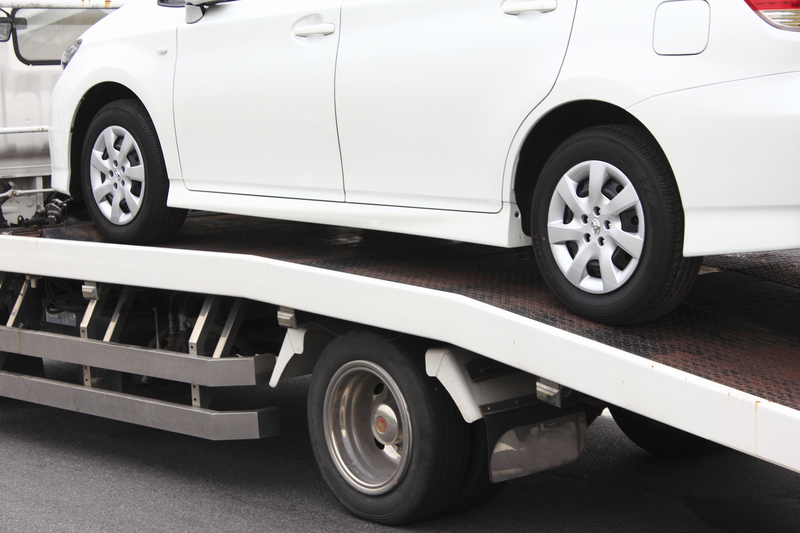Long-Term Sofa Storage: Expert Advice for Ultimate Protection
Posted on 22/05/2025
Long-Term Sofa Storage: Expert Advice for Ultimate Protection
Your sofa is more than just furniture; it's a centerpiece of your living space, a gathering point for friends and family, and a significant investment. But what happens when you need to store it for an extended period--whether due to moving, renovating, or downsizing? Long-term sofa storage comes with its own unique set of challenges, but with the right approach, you can ensure your beloved couch emerges looking as good as the day you stored it. In this comprehensive guide, discover expert advice and proven methods for ultimate sofa protection during long-term storage.

Why Proper Sofa Storage Matters
Long-term couch storage is not just about saving space. Without correct preparation and safeguards, sofas can suffer from:
- Mold and mildew growth from trapped moisture
- Tears or sagging due to improper support
- Pest infestation like rodents, moths, or insects
- Permanent stains or discoloration
- Structural warping from fluctuating temperatures
Read on to learn how to avoid these pitfalls and ensure long-lasting sofa protection in storage.
Choosing the Right Storage Facility for Your Sofa
The success of storing a sofa long-term starts with location. Here's what to consider:
1. Climate-Controlled Storage Units
Climate control is essential. Sofas are made of materials like fabric, leather, wood, and foam that can be damaged by extreme temperatures and humidity. Choosing a climate-controlled unit ensures:
- No excess moisture to trigger mold or mildew
- Stable temperatures that prevent wood from warping or cracking
- Furniture fabric and leather preservation
Always opt for environmentally managed storage for ultimate furniture protection.
2. Security and Accessibility
Protect your investment with a facility equipped with:
- 24/7 surveillance cameras
- Gated entry and robust locks
- On-site personnel
- Clean and pest-free environment
Accessibility is also important. Choose a unit that allows you to check or retrieve your sofa when needed, as regular checkups are ideal for extended couch storage.
Pre-Storage Preparation: How to Safeguard Your Sofa
1. Deep Clean the Sofa
Before any move, thoroughly clean the sofa to remove dust, food crumbs, body oils, and pet hair. Here's how:
- Vacuum: Use a vacuum with an upholstery attachment to get into crevices and seams.
- Spot Clean: Treat stains with appropriate fabric or leather cleaner.
- Deodorize: Sprinkle baking soda and vacuum after a few hours for a fresher scent.
- Professional Cleaning: For heavily soiled or delicate sofas, consider a specialist.
Never store a dirty sofa! Dirt attracts pests and can leave lasting marks during long-term storage.
2. Disassemble When Possible
Breaking down your sofa minimizes damage risk and makes handling easier. Detach legs, cushions, and armrests if possible. Label each part and store screws in a labeled bag. Take pictures before disassembling to aid in reassembly later on.
3. Protect with Proper Materials
Wrap every component for ultimate sofa protection in storage. Use:
- Breathable covers: Cotton sheets or furniture blankets prevent dust buildup and let air circulate.
- Plastic wrap or stretch film: Use sparingly--mainly for legs and hard surfaces. Avoid sealing the whole couch in plastic, as this can trap moisture and cause mold.
- Padding: Bubble wrap or foam can protect corners from bumps and scratches.
- Desiccant packs: For added moisture control, tuck a few silica gel packs around.
Tip: Never store a sofa uncovered or directly on the ground. Always use a breathable layer first.
The Best Way to Store a Sofa for the Long Haul
1. Storage Unit Layout
- Elevate the Sofa: Use pallets or blocks to raise the couch off the ground, safeguarding it from potential water leaks or condensation.
- Leave Space: Don't cram items on or around your sofa. Crowding increases risk of indentation, rips, or other damage.
- Upright is Best: If space allows, store the sofa upright on its end. This allocates more area and reduces pressure on seat cushions.
2. Cushion & Pillow Storage
Store cushions and pillows separately in breathable bags or bins. Stuffing them inside the sofa can cause mis-shaping over time. Label and store them in a clean, dry area of the unit.
3. Leather Sofas Require Extra Care
- Clean and condition the leather before storage using a leather-safe product.
- Wrap loosely with cotton covers--never plastic!
- Use desiccants to prevent moisture and potential mildew.
- Visit occasionally to buff with conditioner and inspect.
Specialists emphasize that leather couch long-term storage requires consistent climate control and periodic checks to avoid cracking or stretching.
How to Protect Your Sofa from Pests and Mold
Irrespective of where you store your sofa, pest and moisture damage are two main threats:
- Use natural repellents like lavender sachets or cedar blocks inside the storage unit.
- Never store food items nearby. Crumbs or food wrappers will attract rodents and bugs.
- Inspect for leaks or weak seals in the storage unit before moving your sofa in.
- Place moisture absorbers (like DampRid or silica gel packs) near the sofa but out of pets' reach.
Periodic Maintenance Tips for Extended Sofa Storage
Even in long-term storage, your sofa needs some occasional attention:
- Visit and inspect: Every few months, check for any signs of damage, pests, or moisture.
- Avoid rearranging often: Unnecessary moving can cause wear and tear.
- Air the unit: If possible, ventilate the space briefly on dry days to reduce humidity.
- Reapply protective treatments: Leather conditioners or fabric sprays should be refreshed annually if stored for over a year.
Unpacking and Reassembling: Reviving Your Stored Sofa
Step 1: Careful Unwrapping
Remove covers and wraps outdoors or in a garage to avoid bringing any dust or residue indoors. Inspect each section as you go.
Step 2: Assembly and Cleaning
- Reattach all removable parts using previously organized hardware.
- Vacuum and wipe down all surfaces.
- For fabric sofas, a light steam clean can refresh the look.
- For leather sofas, apply a conditioning treatment post-storage.
Step 3: Air Out the Sofa
Allow your sofa a few days in a well-ventilated space before regular use, ensuring any storage odors dissipate and materials recover from compression.

Frequently Asked Questions about Long-Term Sofa Storage
-
Q: Can I store a sofa in my garage or basement?
A: While convenient, garages and basements are prone to temperature changes, humidity, and pests--making them risky for extended sofa storage. A secure, climate-controlled facility is highly recommended. -
Q: Should I cover my sofa with plastic for storage?
A: No. Plastic traps moisture, increasing the risk of mold. Use breathable fabric sheets or furniture covers. -
Q: How long can I leave my sofa in storage?
A: With proper prep and climate control, sofas can be stored for many years without damage. However, periodic checks are important for ultimate sofa protection. -
Q: Are there special tips for storing a leather couch?
A: Leather demands conditioning, breathable cover, and careful humidity management. Avoid plastic or non-breathable wraps entirely. -
Q: How can I prevent smells from developing?
A: Ensure cleanliness before storage, use odor absorbers like baking soda or charcoal packs, and promote airflow when possible.
Conclusion: Long-Term Sofa Storage Made Easy
Protecting your sofa investment through long-term storage doesn't have to be stressful. By following expert advice--choosing climate-controlled facilities, meticulous cleaning, smart packing, and regular monitoring--you guarantee ultimate sofa protection in storage. Whether your couch is beloved or brand new, giving it the right care will ensure it stays comfortable, clean, and ready to serve as the heart of your home for years to come.
Looking for more furniture storage tips? Stay tuned to our site for guides on storing beds, tables, and more--keeping your lifestyle organized and your belongings in perfect condition!



